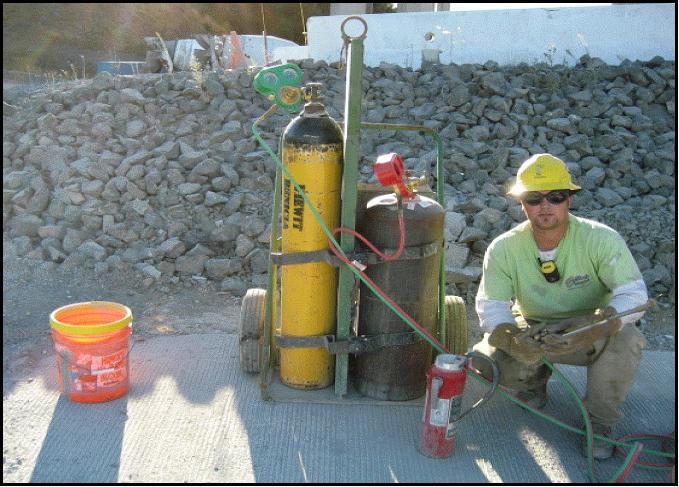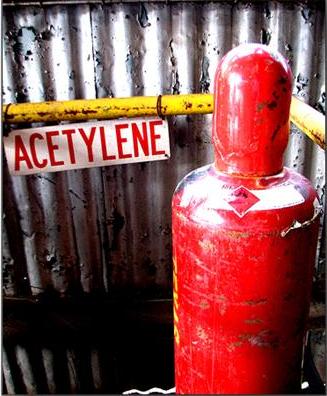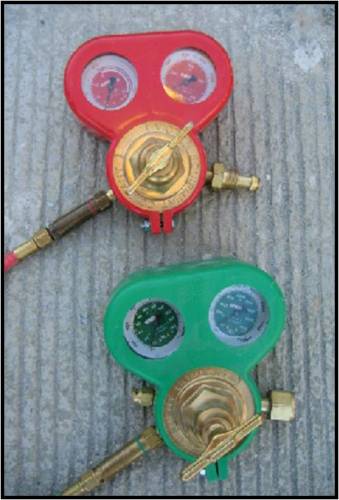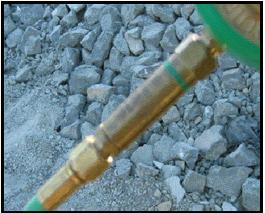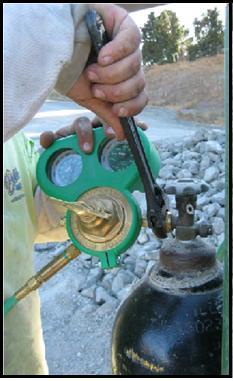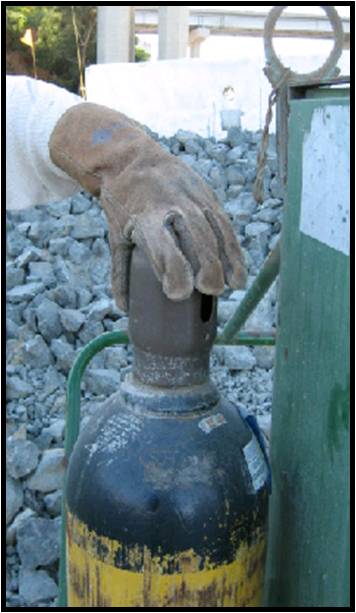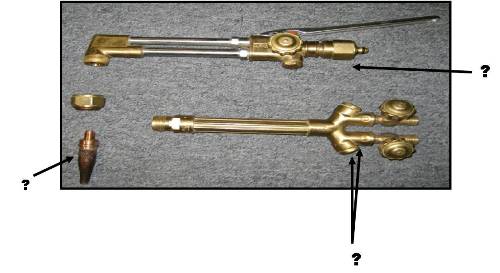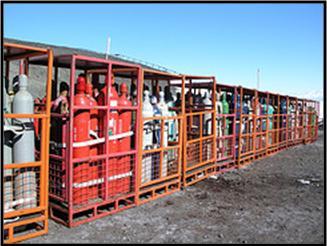Unit 3b (Oxy-acetylene Torches)

You must complete Unit 3B (Oxy-Acetylene Torches) with a score of 90% or higher before continuing to Unit 3C (Toolbox Meetings).
- 1.
Typical setup is: - Tank/Cylinders - Regulators - Hoses - Torch - Fire Extinguisher
- A.
True
- B.
False
Correct Answer
A. TrueExplanation
The given statement is true. A typical setup for welding or cutting involves a tank or cylinders containing the necessary gases, regulators to control the flow of gases, hoses to connect the regulators to the torch, a torch for welding or cutting, and a fire extinguisher for safety purposes. This setup is commonly used in various welding and cutting processes to ensure the availability of the necessary equipment and safety measures.Rate this question:
-
- 2.
Oxygen is a _______ gas.
- A.
Combustible
- B.
Non-Combustible
- C.
Flammable
- D.
Explosive
Correct Answer
B. Non-CombustibleExplanation
Oxygen is a non-combustible gas because it does not burn or support combustion. While oxygen is necessary for combustion to occur, it is not combustible itself. Combustible gases are those that can be ignited and burn, but oxygen does not possess this property.Rate this question:
-
- 3.
Acetylene is a _______ gas.
- A.
Stable
- B.
Unstable
Correct Answer
B. UnstableExplanation
Acetylene gas is very unstable.Rate this question:
-
- 4.
In regards to regulators, you should do all of the following EXCEPT:
- A.
Use for line checks.
- B.
Use to control output pressure.
- C.
Keep petrolium products away.
- D.
Avoid cleaning.
Correct Answer
D. Avoid cleaning.Explanation
The given question is asking about the actions that should not be done in regards to regulators. The correct answer is "Avoid cleaning." This means that cleaning the regulators is not recommended. Cleaning regulators can potentially damage the equipment or interfere with its functionality. It is important to follow proper maintenance procedures and consult the manufacturer's instructions for any cleaning or maintenance requirements.Rate this question:
-
- 5.
A flashback arrestor is sometimes required.
- A.
True
- B.
False
Correct Answer
B. FalseExplanation
Flashback arrestors are always required at regulator to prevent fire from traveling through to hose and into the cylinder.Rate this question:
-
- 6.
When using a cutting torch, which of the following should be worn?
- A.
Earplugs
- B.
Leather Welder Gloves
- C.
Shaded Glasses
- D.
Snug-fitting Clothes
Correct Answer
C. Shaded GlassesExplanation
Torching goggles WC-5 are to be used instead of shaded safety glasses or sunglasses.Rate this question:
-
- 7.
When opening an Acetylene bottle, open the valve slowly, no more than _____ turns.
- A.
1
- B.
1 1/3
- C.
1 1/2
- D.
2
Correct Answer
C. 1 1/2Explanation
When opening an Acetylene bottle, it is important to open the valve slowly to prevent any sudden release of gas. Opening the valve slowly allows for better control and reduces the risk of accidents. Opening the valve no more than 1 1/2 turns ensures a gradual release of gas and minimizes the chances of a sudden surge in pressure.Rate this question:
-
- 8.
When shutting down, the following should be done in what order? 1. Close cylinders. 2. Close acetylene valve on torch, followed by the oxygen. 3. Relieve line pressure valves. 4. Re-open torch valves and allow for line to bleed off. 5. Cap cylinders, wrap up hoses, and store properly.
- A.
1, 2, 3, 4, 5
- B.
2, 1, 4, 3, 5
- C.
1, 2, 4, 3, 5
- D.
2, 1, 3, 4, 5
Correct Answer
B. 2, 1, 4, 3, 5Explanation
When shutting down, it is important to do so in the correct order (2, 1, 4, 3, 5).Rate this question:
-
- 9.
To which parts of the torch are the arrows pointing?
- A.
Cutting attachment, oxygen blast trigger, preheat oxygen.
- B.
Torch handle, cutting tip, preheat oxygen.
- C.
Cutting tip, flow arrestors, preheat oxygen.
- D.
Flow arrestors, control valves, cutting attachment.
Correct Answer
C. Cutting tip, flow arrestors, preheat oxygen.Explanation
The arrows in the image are pointing to the cutting tip, flow arrestors, and preheat oxygen parts of the torch.Rate this question:
-
- 10.
In regards to storage, cylinders that are full must be stored upright where they are protected from damage. However, empty cylinders may be stored horizontally and on the ground.
- A.
True
- B.
False
Correct Answer
B. FalseExplanation
No cylinder is to be stored lying on the ground no matter if it is full or empty. Cylinders can still contain pressure when empty. Also, remember that the company who swaps out your empty cylinder for a full one often refills the empty cylinder for future use. A cylinder could be damaged if left on its side and cause an injury later.Rate this question:
-
Quiz Review Timeline +
Our quizzes are rigorously reviewed, monitored and continuously updated by our expert board to maintain accuracy, relevance, and timeliness.
-
Current Version
-
Jan 12, 2024Quiz Edited by
ProProfs Editorial Team -
Aug 13, 2008Quiz Created by
Kiewitsafe
 Back to top
Back to top



